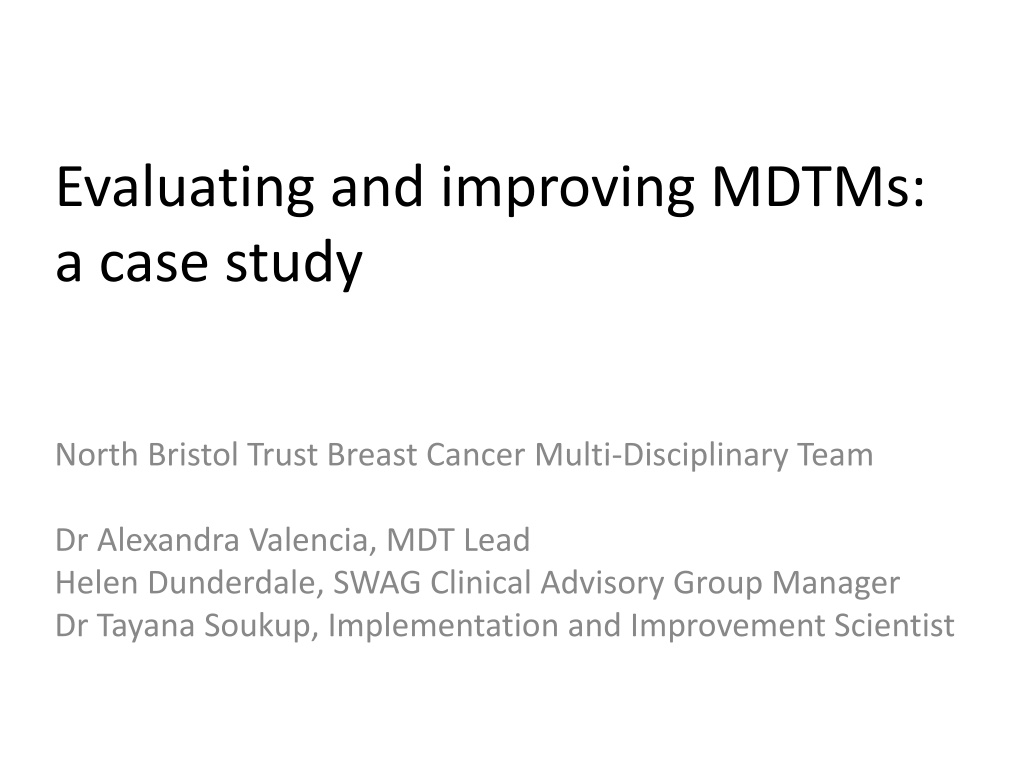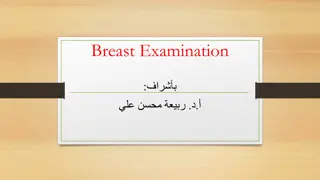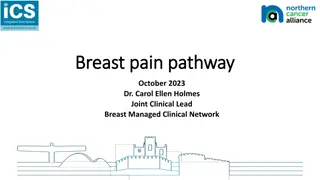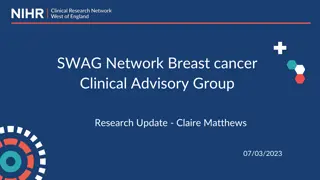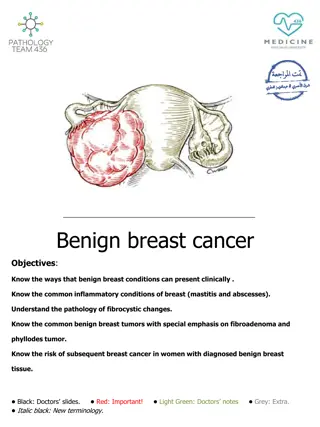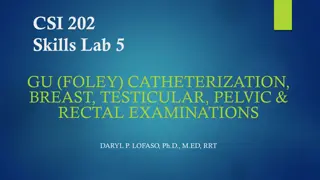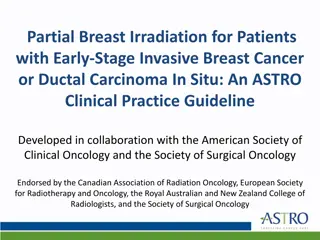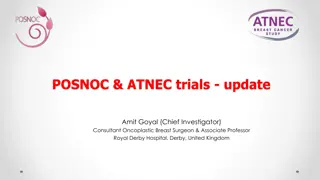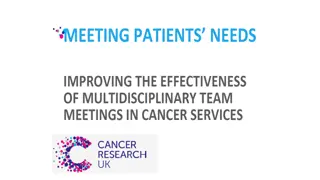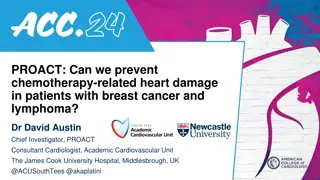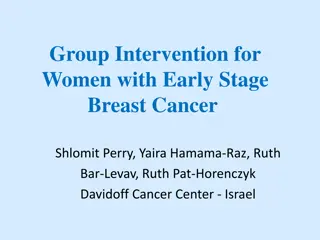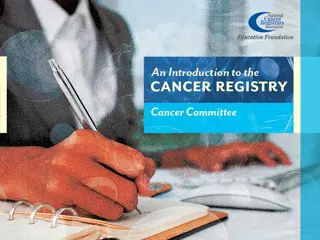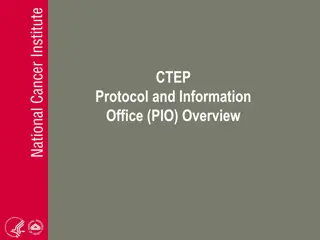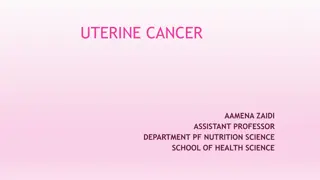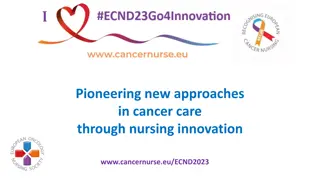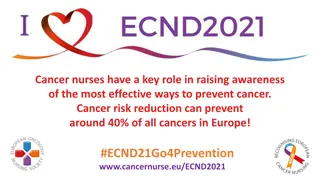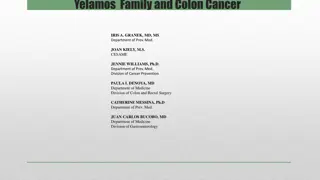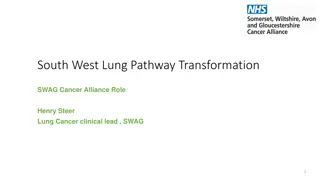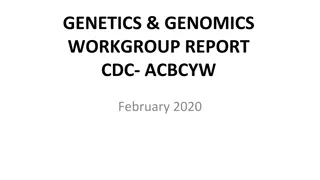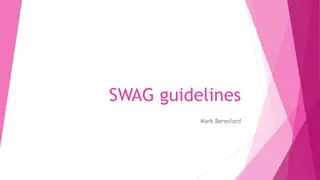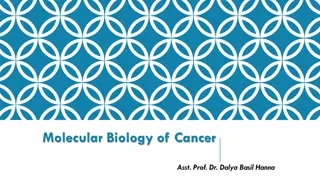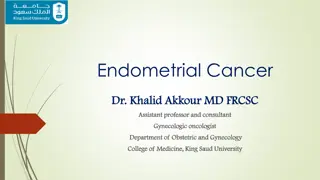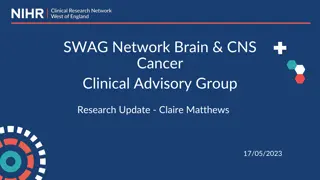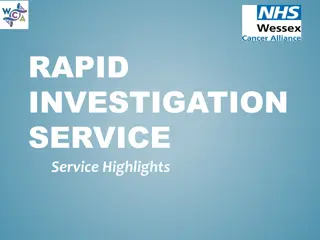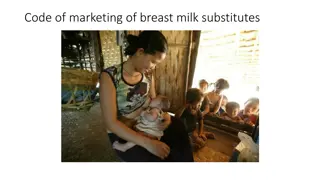Evaluating and Improving Multidisciplinary Breast Cancer Team Decision-Making
The case study focuses on evaluating and enhancing Multidisciplinary Team Meetings (MDTMs) within a Breast Cancer MDT at North Bristol Trust. The study emphasizes the importance of effective MDT collaboration in ensuring optimal patient care and highlights methods for assessing and improving MDT working. By implementing audits, feedback sessions, and quality improvement interventions, the team aims to enhance decision-making processes and patient outcomes.
Download Presentation

Please find below an Image/Link to download the presentation.
The content on the website is provided AS IS for your information and personal use only. It may not be sold, licensed, or shared on other websites without obtaining consent from the author. Download presentation by click this link. If you encounter any issues during the download, it is possible that the publisher has removed the file from their server.
E N D
Presentation Transcript
Evaluating and improving MDTMs: a case study North Bristol Trust Breast Cancer Multi-Disciplinary Team Dr Alexandra Valencia, MDT Lead Helen Dunderdale, SWAG Clinical Advisory Group Manager Dr Tayana Soukup, Implementation and Improvement Scientist
Plan for this session Background Methods Conclusions
Multidisciplinary team (MDT) working is seen as the gold standard in many countries Care of cancer patients has become more complex due to the increasing numbers of diagnostic tests, treatments, and increased patient empowerment in decision-making When MDTs do not work together effectively care can be sub- optimal; recommendations can be clinically inappropriate, or not acceptable to patients, resulting in delays to treatment, distress for patients and frustration for healthcare professionals Effective MDT decision-making requires consideration of comprehensive patient-centred information at the point of decision-making https://www.ncbi.nlm.nih.gov/pmc/articles/PMC5783021/
Assessing and improving MDT working is important 1.Increased performance variability exists https://www.ncbi.nlm.nih.gov/pubmed/30382292 2.Patient safety Teamwork as mechanism for enhancing patients safety (IoM) 3.Cost-effectiveness 822K/year; prep time 100mil/year https://www.bmj.com/rapid-response/2011/11/02/cost-mdt 5
Study setting 1x team: Breast Cancer MDT from Bristol Trained assessor 3x meetings: baseline assessments between July and August 2019 1x team feedback session
Team Audit and Feedback [Identify, Assess, Feedback, Improve] 2. ASSESS: Team s baseline performance against evidence and recommendations, or previous phase 3. FEEDBACK: Feed back results to the team, and introduce QI intervention 1. IDENTIFY a problem / issue 5. REPEAT the cycle Performance in MDMs (steps 2 to 4) Benchmark Benchmark performance against: performance against: 2 2 1. 1. team s baseline performance 2. 2. recommendations 3. 3. evidence 4. IMPROVE: Implement QI intervention 8
2. ASSESS: Team Audit and Feedback [Identify, Assess, Feedback, Improve] Team s baseline performance against evidence and recommendations, or previous phase 3. FEEDBACK: Feed back results to the team, and introduce QI intervention 1. IDENTIFY a problem / issue 5. REPEAT the cycle Performance in MDMs (steps 2 to 4) EVIDENCE-BASED: Non-punitive and actionable feedback provided to professionals to allow them to assess and adjust their performance is effective in improving practice and supporting quality and safety in healthcare settings. 4. IMPROVE: Implement QI intervention Flottorp et al., 2010; Michie et al., 2005; Ivers et al., 2012 9
We can only be sure to improve what we can actually measure Professor A Darzi High Quality Care for All Department of Health (UK) 2008
Tools for MDT assessment Instrument/Tool What it measures 1. MDT-MODe Team decision-making process 2. MDT-ORAS Team functioning as expressed in national UK guidance (18 components) 3. TEAM Core functions of the team and their team meetings, based on the components defined in the characteristics of effective MDT 4. MDT-MOT Team attendance, leadership/chairing of the MDM, teamwork and culture 5. MDT-FIT Encompasses validated components of MDT-MOT and TEAM, allows self-assessment of team working, combined with expert feedback from facilitator, and sharing of the outcome with the team as part of a team-reflective discussion 6. ATLAS* Leadership and chairing skills 7. MeDiC** Gauges complexity of cases for MDT discussion (streamlining workload) https://www.ncbi.nlm.nih.gov/pubmed/29403284 11
The most widely used MDT tool across different cancers, teams and countries . Across various cancer: Urology Colorectal Upper GI Head & Neck Breast Lung Gynaecological Used by clinical and non- clinical researchers 12
https://www.ncbi.nlm.nih.gov/pubmed/21610266 1. Quality of information 2. Quality of contributions 3. Decision made is recorded as yes, no, or deferred to next MDT 13
MDT-MODe RATING SCALE 5-point scale Anchors vary slightly 1 2 3 4 5 Poor, inadequate, no information, absent contribution Good, Average, with some vagueness or inconsistencies comprehensive information & fluid contribution Decision-Making COMPROMISED ENHANCED 14
MDT-MODe RATING SCALE (CONT.) Scored as N/A when: a one stop clinic case is benign and no further action contributions from the oncologists and nurses are not applicable as they won t have been in clinic a new radiology or one stop clinic case is malignant contributions from the nursing team are not applicable as the nurses are not present in the one stop clinic or radiology clinics
Preliminary findings 299 patients discussed over 3 meetings 95, 103 and 101, respectively 2min av. discussion time per patient Range: 20sec to 7min 37 cases deferred for another meeting Data analysis in progress!
Examples of practice 15min meeting break occurred in the observed MDT after discussion of 48 cases in the first meeting, and 56 cases in the next two meetings Thoughts from Helen: As discussed in the first meeting of SWAG Cancer Clinical Leads, the prolonged length of meetings has been proven to reduce quality of decision making, particularly after the first hour, or discussion of 20 patients. The addition of a 10 minute break at this point has been shown to balance the quality of decision making and reduce the length of the overall meeting https://bmjopen.bmj.com/content/9/5/e027303
Examples of practice cont. Meeting room is configured in a U-shape which allows participants to see and hear each other clearly Case discussions are ordered according to the patient pathway, which allows oncologists to attend a specific slot in the meeting Role of Chair, Pathologist and Radiologist is rotated half way through the meeting Surgeon who knows the patient introduces the case history Research nurse facilitates discussion of relevant research trials MDT outcome is relayed directly to the MDT Coordinator, typed immediately into the Somerset Cancer Register, and checked for accuracy by the relevant attendees
For consideration Are some professional groups under-represented when they shouldn t be? Could Chairing help with this? Are certain types of information under-represented when it would be useful? Could pathology provide a cut-off date for listing cases to report results from surgical samples? Could some of the benign cases be removed if planning time is scheduled? Could attendance be reduced further for particular sections of the meeting?
Thank you for listening. What do you think?
